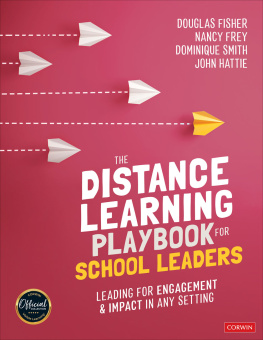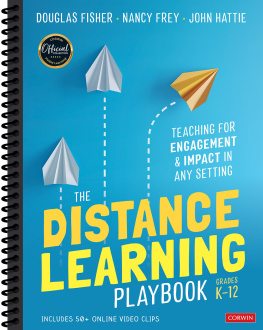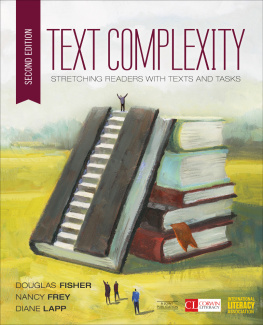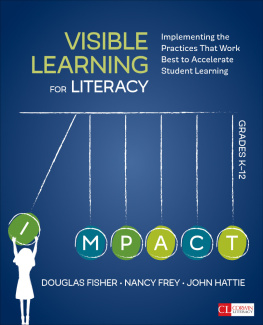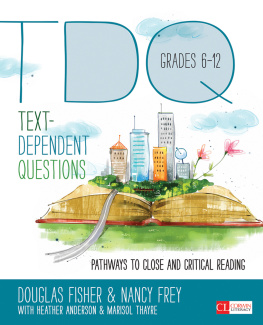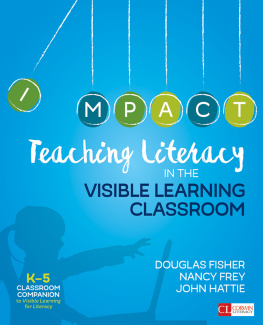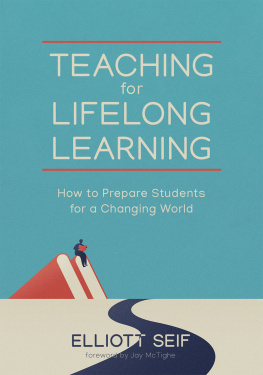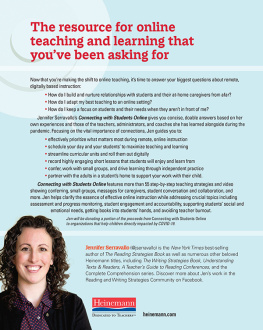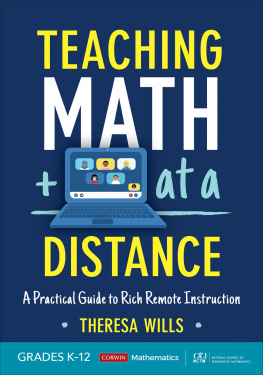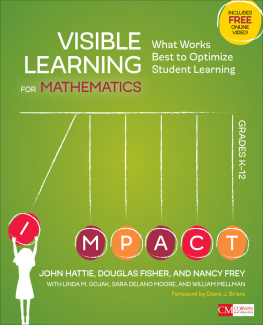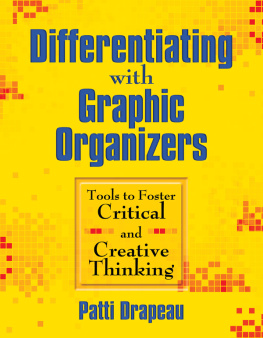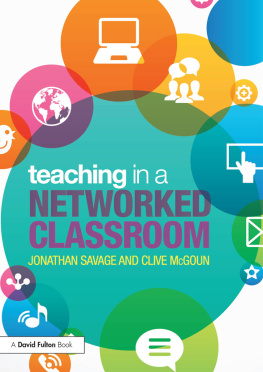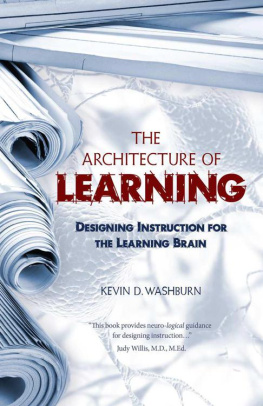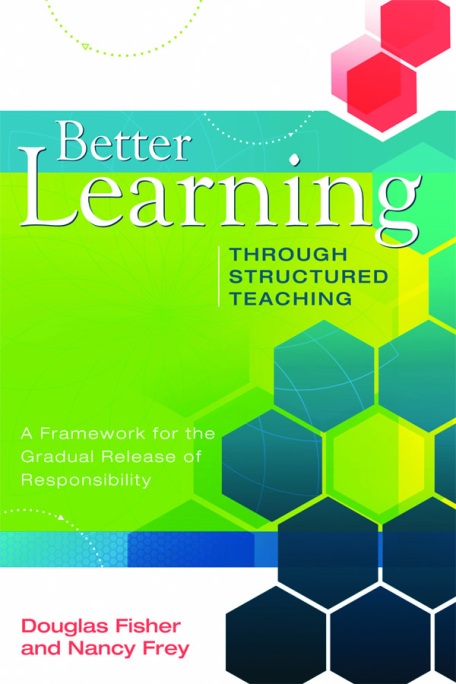Chapter 1
Learning, or Not Learning, in School
Learningthe goal of schoolingis a complex process. But what is learning? It's a bit more complex than most people think. Consider the following definitions of learning and the implications each has for teaching:
- The process of acquiring knowledge or skill through study, experience, or teaching
- Experience that brings about a relatively permanent change in behavior
- A change in neural function as a consequence of experience
- The cognitive process of acquiring skills or knowledge
- An increase in the amount of response rules and concepts in the memory of an intelligent system
Which definition fits with your beliefs? How is it that you learn? Think of something that you do well. Take a minute to analyze this skill or behavior. How did you develop your prowess? How did you move from novice to expert?
We would argue that the things you do well were taught to you through a series of intentional actions. You probably did not develop high levels of skills from simply being told how to complete tasks. Instead, you likely had models, feedback, peer support, and lots of practice. Over time, you developed your expertise. You may even have learned more when you had to share that expertise with others. The model that explains this type of learning environment is called the gradual release of responsibility .
Gradual Release of Responsibility
The gradual release of responsibility model of instruction suggests that the cognitive load should shift slowly and purposefully from teacher-as-model, to joint responsibility, to independent practice and application by the learner (Pearson & Gallagher, 1983). The gradual release of responsibility model stipulates that the teacher moves from assuming "all the responsibility for performing a task to a situation in which the students assume all of the responsibility" (Duke & Pearson, 2002, p. 211). This gradual release may occur over a day, a week, a month, or a year. Graves and Fitzgerald (2003) note "effective instruction often follows a progression in which teachers gradually do less of the work and students gradually assume increased responsibility for their learning. It is through this process of gradually assuming more and more responsibility for their learning that students become competent, independent learners" (p. 98).
The gradual release of responsibility model is the intersection of several theories, including the following:
- Piaget's (1952) work on cognitive structures and schema
- Vygotsky's (1962, 1978) work on zones of proximal development
- Bandura's (1965) work on attention, retention, reproduction, and motivation
- Wood, Bruner, and Ross's (1976) work on scaffolded instruction
Taken together, these theories suggest that learning occurs through interactions with others, and when these interactions are intentional, specific learning occurs. Unfortunately, most current implementation efforts of the gradual release of responsibility model limit these interactions to adult and child exchanges. A common framework for implementing the model is I do it; we do it; you do it . In other words, many current models lack a vital component: learning through collaboration with peers.
The effectiveness of peer learning has been demonstrated with English language learners (Gersten & Baker, 2000), students with disabilities (Stevens & Slavin, 1995), and learners identified as gifted (Coleman & Gallagher, 1995). While the effectiveness of peer learning has been documented, it has typically been examined as a singular practice, isolated from the overall instructional design of the lesson. A more complete implementation model for the gradual release of responsibility moves from modeled to guided instruction, followed by collaborative learning, and finally independent experiences (see Figure 1.1).
Figure 1.1. A structure for successful instruction
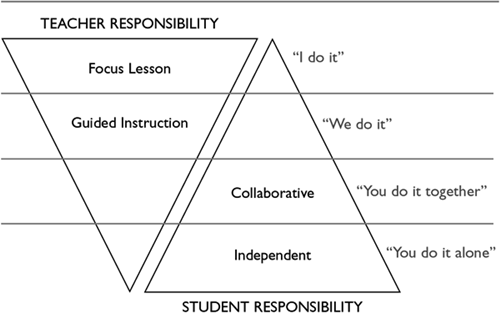
The four instructional arrangements contained within Figure 1.1 include focus lessons, guided instruction, collaborative learning, and independent tasks. Each of these will be explored in greater detail in subsequent chapters. At this point, we will provide an overview of each of these such that we can then discuss situations in which students aren't learning.
Focus Lessons
In the gradual release of responsibility model, the focus lesson is the modeling phase. For a focus lesson to be effective, teachers must clearly establish a purpose and model their own thinking. Consider, for example, the teacher who clearly communicates the purpose of the lesson as follows:
Our content goal today is to multiply and estimate products of fractions and mixed numerals. Our language goal for today is to use mathematical terminology while discussing problems and answers with your peers. Our social goal today is to improve our turn-taking skills by making sure that each member of the group has a chance to participate in the discussion.
As Dick, Carey, and Carey (2001, p. 25) remind us, an "instructional goal is (1) a clear, general statement of learner outcomes, (2) related to an identified problem and needs assessment, and (3) achievable through instruction." These are three important considerations for establishing purpose. As we will discuss further in the chapter on focus lessons, it's not enough to simply state the purpose. We must ensure that students have opportunities to engage with the purpose and obtain feedback about their performance.
In addition to establishing purpose, the focus lesson should provide students with information about the ways in which a skilled reader, writer, or thinker processes information. Most often, this is done through a think-aloud (see Kucan & Beck, 1997) in which the teacher models the type of thinking required to solve problems, understand directions, comprehend a text, or the like. For example, after reading aloud a passage about spiders to 3rd graders, a teacher might say:
Now I have even more questions. I wonder how spiders eat if they don't have mouth parts. I can't really visualize that, so I think I'll look for more information to answer my question. I do remember something very interesting. I didn't know that spiders are found all over the world. I think that the most interesting spider is the one that lives underwater in silken domes. Now that is something I need to know more about.
Focus lessons are almost always done with the whole class and typically last 15 minutes or less. The point is to clearly establish purpose and to ensure that students have a model from which to work.


